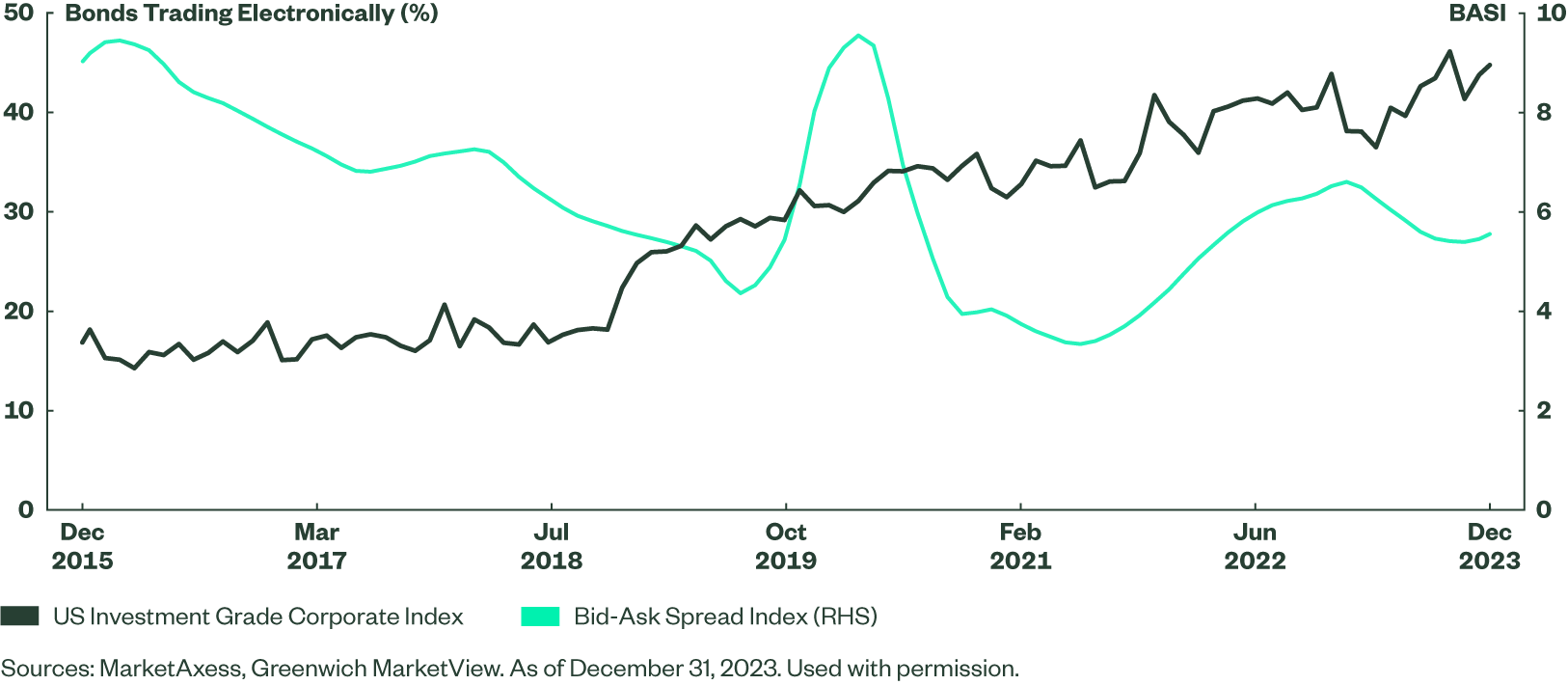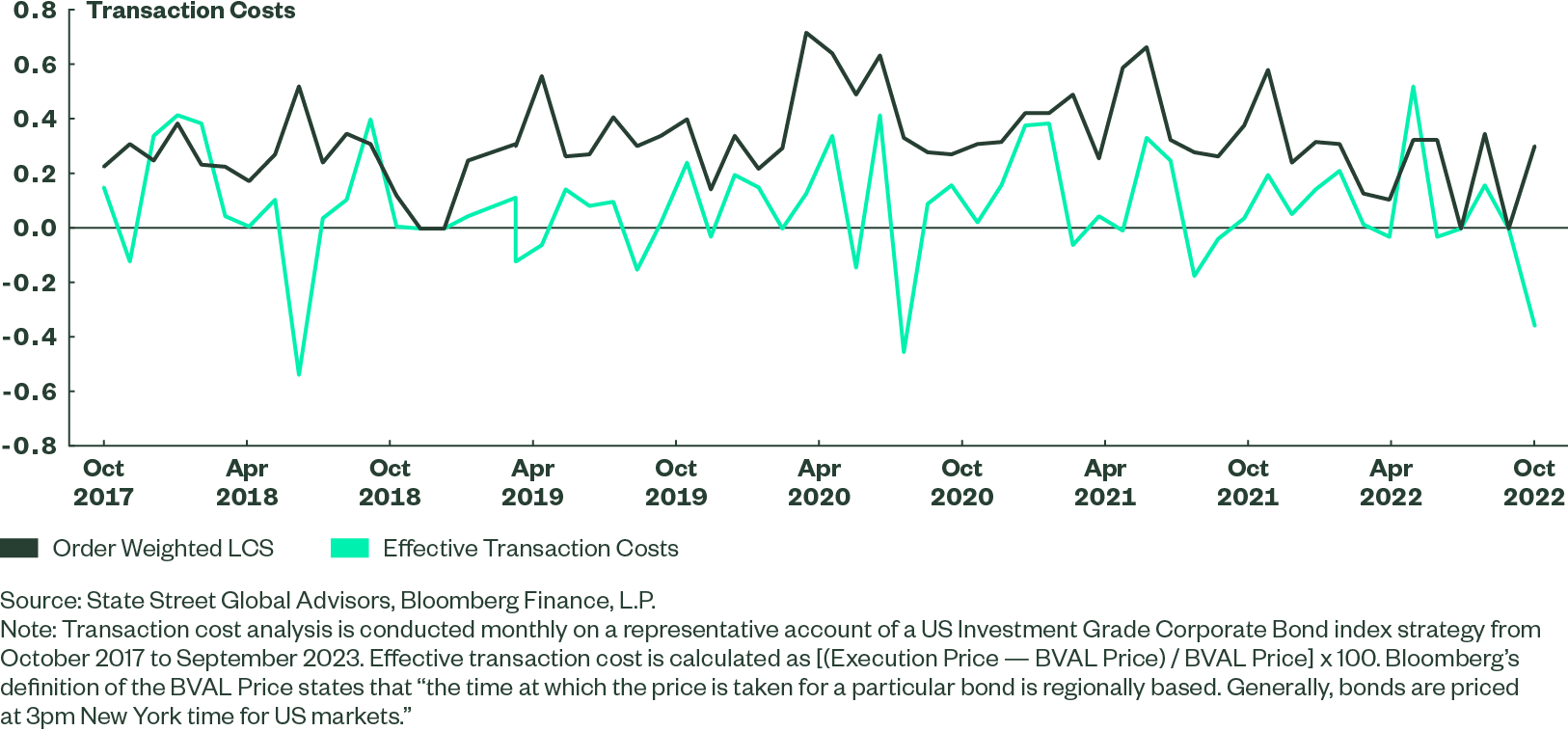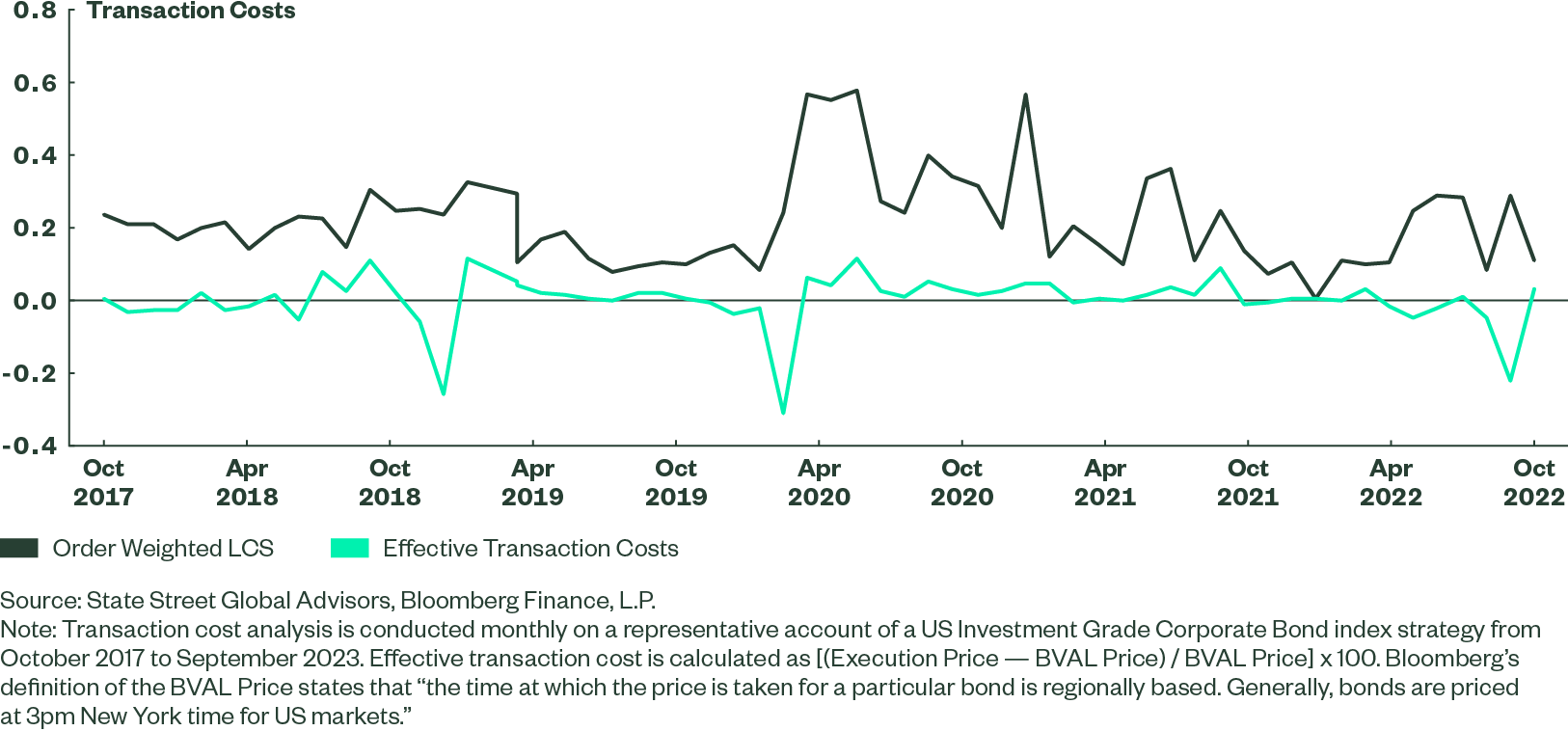Liquidity in SAFI Portfolios
Investors have been slower to adopt systematic investing in credit than in equities, due to liquidity concerns. But recent innovations have provided new pathways for controlling liquidity and estimating transaction costs.
There’s no doubt that corporate bond markets are more complex and substantially less liquid than equities. A given company may have dozens of bonds outstanding, with different coupon levels, maturity dates, optionality, and seniority. Some of these, particularly older and smaller issues, may hardly trade at all. Until recently, corporate bonds traded mostly over-the-counter (OTC), and price discovery was opaque.
As a result, liquidity has understandably been the main impediment holding back investors from embracing systematic credit as much as systematic equity. What’s more, transaction costs can be substantially higher in credit than in equity, another reason why systematic strategies have been more widely used in equity. However, recent innovations in fixed income markets make it possible to overcome this liquidity barrier. The proliferation of electronic trading and fixed income ETFs has given rise to basket and portfolio trading, improving price transparency and increasing efficiency in the trading of credit securities, even in the face of more recent upticks in volatility.
Fig. 1: Electronic Bond Trading

New reporting requirements to include more OTC credit transactions are giving researchers access to new trading data, increasing market transparency and opening new opportunities to study liquidity patterns. Market participants are adopting new trading practices, aided in part by new technologies. The rise in the use of ETFs and portfolio trading in credit markets have helped increase liquidity in otherwise illiquid segments of the bond market. Partially due to regulatory concerns, investment banks turned over production and dissemination of fixed income index data to vendors, which resulted in historical index data becoming more broadly available.
We’ll cover these developments more in-depth in our upcoming paper, “Systematic Investing in Credit Is Now Feasible”, but here we want to focus on a specific, critical point – that any study of systematic credit strategies must include liquidity considerations as a central part of the framework.
Consider Implementation and Cost
There are two ways to approach the issue of liquidity in systematic credit portfolios. First, we must make sure that any proposed strategy is implementable. If an “optimal strategy” suggests buying bonds that are simply not available in the market or can be purchased only at very wide bid-offer spreads, it will not be executable in practice. To avoid this situation, a screening process must be put in place to make sure that the optimization process includes only sufficiently liquid bonds.
Second, to evaluate the success of a strategy, it is important to include the effect of transaction costs. In a historical backtest, actual transaction costs are not known precisely, but access to historical liquidity measures makes it possible to estimate how much it would have cost to execute a given transaction at a particular point in time.
Barclays produces two sets of bond-level metrics of liquidity1 that facilitate these processes. Liquidity Cost Scores (LCS) provide an estimate of the round-trip transaction cost of trading a bond, as a proportion of its market value, based on quotes from Barclays trading desks. This can be used to estimate transaction costs of simulated trades. LCS provide a conservative single-dealer estimate of transaction costs; a large execution desk will see a cross-market bid-offer that should enable it to trade at lower cost. The experience of our Fixed Income trading desk at State Street Global Advisors demonstrates that the costs realized by the portfolio on transactions in both directions are found to be consistently lower than the LCS-based estimates. Figure 2 shows a transaction cost analysis of a passively managed fund against a broad US investment grade credit benchmark.
Figure 2a: Buy Transactions

Figure 2b: Sell Transactions

The other Barclays-produced metric of liquidity is the Trade Efficiency Score (TES), which provides a ranking of the liquidity of corporate bonds, based on the combination of LCS with trading volume information obtained from TRACE. TES are stated as relative scores and are meant to identify tradable bonds in all market environments. Bonds indicated by TES to be in the most liquid tier will exhibit both low trading cost and high transaction volume relative to their peers. Screening bonds based on TES to form the eligible universe for an optimization thus provides an excellent way to make sure that the optimizer purchases only sufficiently liquid bonds.
Defined Benefit plans face a variety of economic and market challenges over their lifetimes and need to manage for those risks – from inflation and interest rates, to market performance and volatility. Unlike an idiosyncratic active approach, which looks at a relatively small number of issuers and makes subjective, high-conviction calls, a SAFI approach is systematically applied to every security in the investable credit universe. This provides a larger opportunity set, while staying within the desired risk limits and controlling tracking error.
More About SAFI
The data-driven insights in our Systematic Fixed Income strategies are informed by systematic signals delivered in the form of indices developed by the Barclays Quantitative Portfolio Strategy team, or QPS, which is well-recognized as an innovator in quantitative fixed income research. Their innovative signals and portfolio optimization methodologies form an important input to the process we, at State Street Global Advisors, use in the implementation and management of Systematic Active Fixed Income strategies.
Explore the State Street Global Advisors thought leadership series on Systematic Active Fixed Income investing to learn more about this innovative investment approach and its benefits.